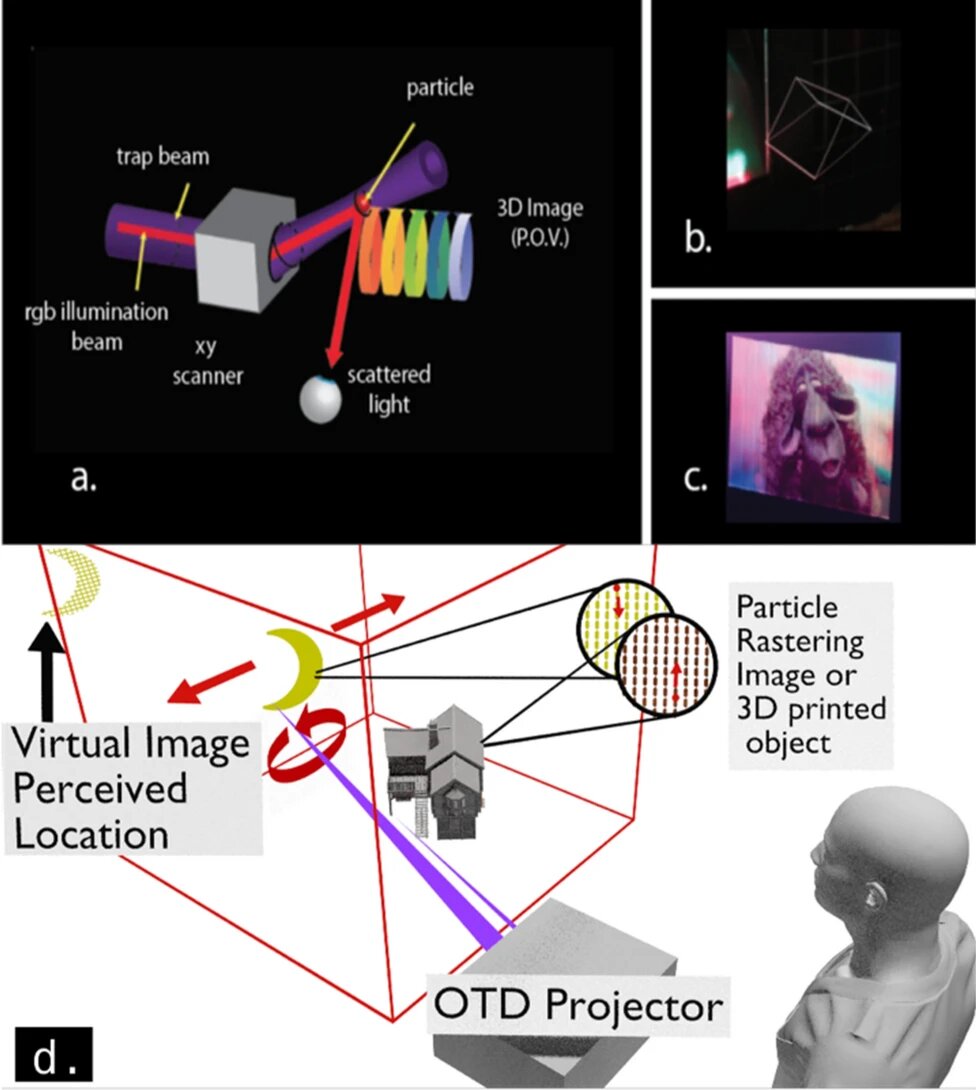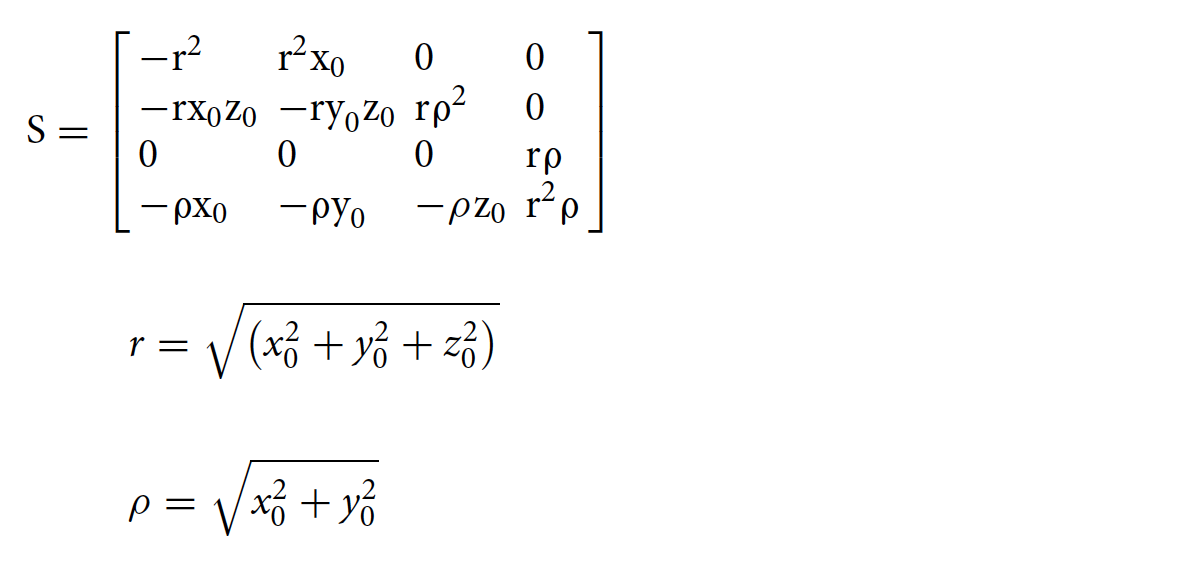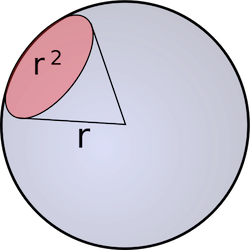
If you look at works from the science fiction category, you can find many common elements. Of course, one of the most obvious ones is incredible technologies - robots, spaceships, stasis cameras, etc. Holograms can be confidently ranked among the leaders in terms of frequency of appearances in movies, games and films. The forefather of holograms is, unsurprisingly, Isaac Asimov, who mentions this technology in the Foundation series of novels. The first film debut for the hologram was the 1974 film Zardoz, starring Sean Connery. Since then, holograms have started appearing in virtually all sci-fi movies to the point where the technology has ceased to amaze, and at times has begun to cause outright dislike for its incredible versatility as a tool for plotting. But,Despite the displeased grumbles of some moviegoers, scientists around the world have a keen interest in this incredible technology. A group of researchers from Brigham Youngham University (USA) have created a new version of the technology for visualizing holographic images that literally come to life before our eyes. This work is already covered on Habré , but let's take a closer look at it. What is the secret of moving holograms, what is their feature and how does it all look? We will find answers to these questions in the report of scientists. Go.
Basis of research
Back in 2018, a work ( A photophoretic-trap volumetric display ) was published , in which scientists describe a device for volumetric display using photophoretic * trapping ( photophoretic trapping ). The operation of the device is based on keeping the particle in a photophoretic trap, which drags the particle through each active point of the image in free space (up to 1 cm 3 ).
* — , , () (), . .When a particle moves through free space, it is illuminated by a visible laser to form an image that a person can see.
This technology is new and requires solving many problems, the main among which are increasing the volume of free space from 1 cm 3 to 100 cm 3 and eliminating the fundamental inability of volumetric displays to create virtual images in free space. The second problem became the main task of the study we are considering.

Image # 1
In this work, we used photophoretic imaging based on an optical trap (OTD from optical trap display), capable of creating both flat and three-dimensional objects in the air ( 1b and 1c ).
With the help of OTD, you can create an image at the edge of the volume of the workspace and change its apparent parallax so that it appears to the observer that the image is behind the volume of the workspace ( 1d ). This effect is called "perspective projection" and is achieved in OTD by changing the scale, shape and parallax of an object on the plane of the background image as the observer moves. In this case, the plane itself can also turn to face the observer, if it is finite (i.e. not spherical).
The authors of previous studies point out that there is a limitation - all points of the image must lie along a line going from the observer through the volume of the display. The dots that the user perceives on the rear panel are no longer three-dimensional because they no longer coincide with physical scattering, so they lose the attribute of ideal accommodation * , but gain the ability to dramatically increase the perceived image size.
Accommodation * is a physiological setting of the eye that allows you to keep the object in focus when the distance to the eye changes.Using perspective projection, OTD can simultaneously generate both real 3D image points for the foreground and simulated non-3D image points for the background.
Device theory
As we have already understood, optical trap imaging works by keeping one or more particles in a photophoretic trap. In different works, the role of confined particles was played by a variety of materials with very different geometries and dimensions. In this work, cellulose particles with a size of 10 μm were used. When the trap moved, the particles moved with it, passing through all points of the image. When the particle reached a certain point in the image, it was illuminated by a combination of red, green, and blue light.
The passage of a particle through a point occurred several times per second, creating an image visible to a person ( 1a). The human visual system can process 10 to 12 frames per second and perceive them individually, while higher speeds are perceived as movement. Therefore, 10 frames per second can be considered the lower limit of a convincing "background" for this imaging technique.
The higher the resolution and refresh rate of the system, the more convincing this effect can be, since the observer will not be able to perceive the updates of the displayed images.
One of the most common forms of perspective is ray tracing, in which the observer (person or camera) is treated as a single point E = (x 0 , y 0 , z 0) plus the display point of the image X = (x, y, z) and the plane on which P is displayed. Finding the intersection of the line EX with the plane P gives the X coordinate in pixels. Perspective projection can be defined by the following matrix relationship for the plane P perpendicular to the line EO, where O is the origin:

The perspective projection matrix is designed to project a scene from space onto a plane. This allows 3D points to be displayed using a 2D surface.
Practical test of the device
To demonstrate simulated virtual images using modified parallax (perspective projection), a flat (2D) OTD image of the moon was created on the back of the workspace. This plane, in turn, was on the front side of the three-dimensional miniature of the house ( 2b ).

Image no. 2
The camera (observer) was placed on a rotating tripod ( 2a). The frame rate of the rendered moon was maintained at 12 frames per second. The number of voxels (volumetric pixels) per second rendered during the experiments was approximately 10,000 per second. The refresh rate of vector images was 28 Hz, however, higher speed results in lower quality. Therefore, it was decided to lower the frequency to 12 Hz, which reduces the flicker effect.
The OTD image playback function changed perspective projection in sync with the movement of the camera arm. The speed of the camera movement was approximately 0.0194 m / s. The camera was focused on the chimney of a house (approximately z = 2 mm). The turning radius was 100 mm to the front edge of the camera lens. The dimensions of the house were 7.7 x 10.6 x 7.4 mm. The initial diameter of the moon was 0.5 mm, and the speed of its movement was 12 frames per second.
Research results

Image # 3
In 3a - 3c, the moon is "drawn" in the plane in front of the house (z = 0 mm), while it does not change, providing a reference image. In 3d - 3f, the moon is still drawn at z = 0, but as the camera rotates, the moon is shifted to the side to obtain a parallax corresponding to the object perceived at z = 8 mm. At 3g - 3ivideo from the camera overlaid on the Blender simulation (both with perspective projection enabled). In this case, there is an insignificant shift caused by the imperfection of the device, but the relative parallax is consistent with the simulation results with high accuracy (the average error was only 5.88%).
Analysis of the experimental results showed that the modified parallax actually creates images perceived behind the workspace. The modified parallax after accounting for the bias showed good agreement with the simulation results, indicating the potential effectiveness of increasing the display space of a volumetric display beyond the physical boundaries of the display.
Despite the results described above, this technique has some limitations: no disparity * , the need to track the position of the observer's eyes, and the discrepancy between accommodation / vergence * and other visual signals.
* — .
* — , .The experiments were carried out using a camera, i.e. monocular. For the hologram imaging technique to be effective for humans, it is necessary to realize accurate binocular parallax. And for this, the OTD must have controlled anisotropic scattering.
The second limitation related to observer tracking is a rather serious problem, since conventional OTD images do not require knowledge of the user's position and still provide an angle of view of almost 4π steradians * .
However, if directional scatter is achieved, then observer tracking can be eliminated in at least two dimensions (horizontal and vertical). The third dimension (the distance from the observer to the image) will still be necessary for perfect reconstruction of the perspective, since the perspective projection is based on the three-dimensional observation point.
Steradian * is a unit of measurement for solid angles, i.e. part of space, which is the union of all rays emanating from a given point (apex of the corner) and intersecting some surface. The full solid angle (full sphere) is 4π steradians.
The final limitation is the mismatch between the accommodation mark, which makes the user focus on the projection plane, and the parallax mark, which makes the viewer focus on the perceived point. This discrepancy between stereopsis * and accommodation can cause adverse side effects for the observer.
Stereopsis * - binocular perception of the shape, size and distance to the object; subjective sense of the depth of space.To mitigate the negative effects, it is necessary to place the perspective projection plane at a distance where parallax is more important than accommodation.
For a more detailed acquaintance with the nuances of the study, I recommend that you look into the report of scientists .
Epilogue
In this work, scientists for the first time demonstrated the practical application of OTD to create an effect similar to virtual images on displays with an optical trap.
All this became possible thanks to the work of scientists, which they did back in 2018. Then they were able to create a technique for visualizing objects in free space. The foundation of this technique is optical traps, which trap particles in the air using a laser. As the particle moves, it follows the trap, leaving behind it a laser-illuminated path floating in the air. The authors of the technique called it "3D printer for light".
According to the study authors, most 3D displays require the viewer to look at the screen, but their design allows for physically present images to float in free space. In other words, this is a real object, not some kind of illusion.
A video in which the authors of the study talk about their creation.
In the future, the authors of the work intend to improve their development, including increasing the working space of the device. According to them, if you choose the right parallax of movement, you can visually increase the size of the working space without actually physically increasing them. This trick will create the illusion of a display up to infinite size, scientists say.
Holograms may be pretty fed up with everyone, given their frequency in movies, literature, and video games. However, in the real world, they are still extremely rare, and their capabilities are very limited. Therefore, while we admire holograms in cinema with admiration (or dislike), scientists continue to work hard so that this technology ceases to be science fiction, and becomes for us as real and mundane as for the heroes of cinema.
Thanks for your attention, stay curious and have a good work week, guys. :)
A bit of advertising
Thank you for staying with us. Do you like our articles? Want to see more interesting content? Support us by placing an order or recommending to friends, cloud VPS for developers from $ 4.99 , a unique analogue of entry-level servers that we have invented for you: The Whole Truth About VPS (KVM) E5-2697 v3 (6 Cores) 10GB DDR4 480GB SSD 1Gbps from $ 19 or how to divide the server correctly? (options available with RAID1 and RAID10, up to 24 cores and up to 40GB DDR4).
Is Dell R730xd 2x cheaper in Maincubes Tier IV data center in Amsterdam? Only we have 2 x Intel TetraDeca-Core Xeon 2x E5-2697v3 2.6GHz 14C 64GB DDR4 4x960GB SSD 1Gbps 100 TV from $ 199 in the Netherlands!Dell R420 - 2x E5-2430 2.2Ghz 6C 128GB DDR3 2x960GB SSD 1Gbps 100TB - From $ 99! Read about How to build the infrastructure of bldg. class with the use of Dell R730xd E5-2650 v4 servers at a cost of 9000 euros for a penny?